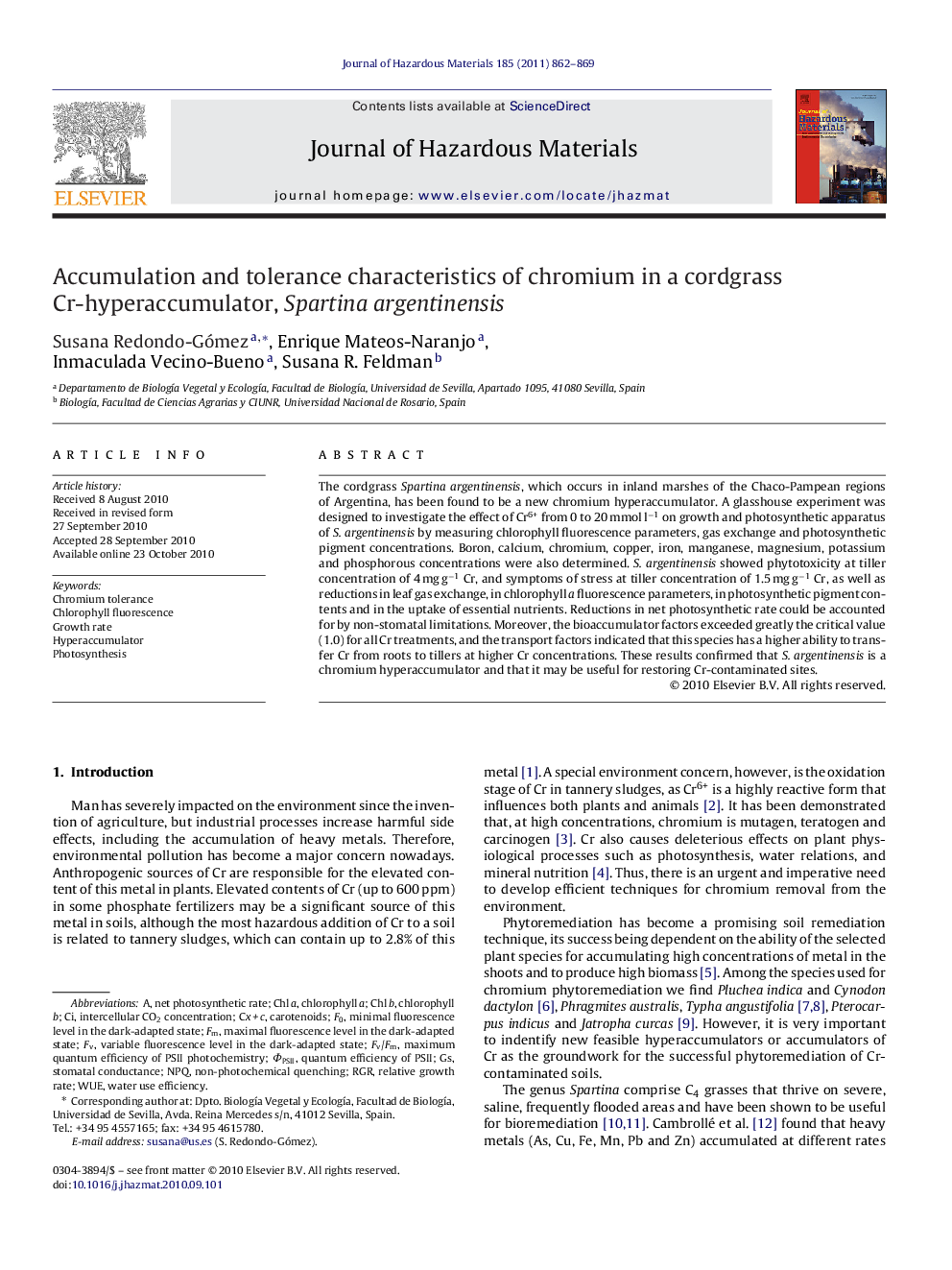| Article ID | Journal | Published Year | Pages | File Type |
|---|---|---|---|---|
| 579867 | Journal of Hazardous Materials | 2011 | 8 Pages |
Abstract
The cordgrass Spartina argentinensis, which occurs in inland marshes of the Chaco-Pampean regions of Argentina, has been found to be a new chromium hyperaccumulator. A glasshouse experiment was designed to investigate the effect of Cr6+ from 0 to 20 mmol lâ1 on growth and photosynthetic apparatus of S. argentinensis by measuring chlorophyll fluorescence parameters, gas exchange and photosynthetic pigment concentrations. Boron, calcium, chromium, copper, iron, manganese, magnesium, potassium and phosphorous concentrations were also determined. S. argentinensis showed phytotoxicity at tiller concentration of 4 mg gâ1 Cr, and symptoms of stress at tiller concentration of 1.5 mg gâ1 Cr, as well as reductions in leaf gas exchange, in chlorophyll a fluorescence parameters, in photosynthetic pigment contents and in the uptake of essential nutrients. Reductions in net photosynthetic rate could be accounted for by non-stomatal limitations. Moreover, the bioaccumulator factors exceeded greatly the critical value (1.0) for all Cr treatments, and the transport factors indicated that this species has a higher ability to transfer Cr from roots to tillers at higher Cr concentrations. These results confirmed that S. argentinensis is a chromium hyperaccumulator and that it may be useful for restoring Cr-contaminated sites.
Keywords
quantum efficiency of PSIIΦPSIICx + cChl bChl aRGRNPQWUEChromium toleranceFv/FmWater use efficiencyHyperaccumulatormaximum quantum efficiency of PSII photochemistryNon-photochemical quenchingminimal fluorescence level in the dark-adapted statemaximal fluorescence level in the dark-adapted statevariable fluorescence level in the dark-adapted stateintercellular CO2 concentrationPhotosynthesisChlorophyll fluorescenceGrowth rateRelative growth ratenet photosynthetic rateStomatal conductanceCarotenoidsChlorophyll achlorophyll b
Related Topics
Physical Sciences and Engineering
Chemical Engineering
Chemical Health and Safety
Authors
Susana Redondo-Gómez, Enrique Mateos-Naranjo, Inmaculada Vecino-Bueno, Susana R. Feldman,
